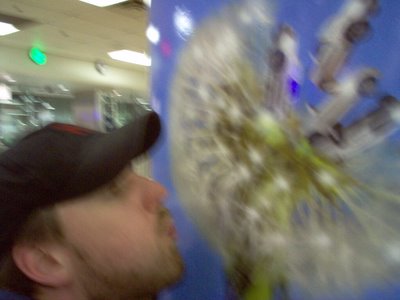More on Hawaii
Mark Twain's Hawaii
At the end of Chain of Craters Road, looking for volcanic activity.
LIKE any paradise, Hawaii walks the fine line between blissful and boring. David Lodge noted this in his satirical novel "Paradise News," imagining the predicament of tourists in fanny packs walking up and down the sidewalks of Waikiki like heavenly pilgrims with no place left to go. They seem contented, but a half-formed question lingers in their eyes:
Multimedia
"Well, this is nice, but is this all there is? Is this it?"
Actually, it's not. Hawaii's blandly sunny face hides a turbulent history, an extra dimension of sadness and beauty. This is what separates Hawaii from the beach-and-beer nowheres like Fort Lauderdale and Cancún: a complicated soul.
Finding it means getting out of Waikiki, peeling back layers to uncover the stories behind the scenery. It means having the right guide, a writer to annotate the loveliness.
Hawaii has seen its share of famous storytellers. Robert Louis Stevenson, Jack London and Herman Melville passed through on their way to other frontiers. But what little they wrote about Hawaii was fictionalized, heavily metaphorical and is now mostly forgotten. James Michener, on the other hand, wrote way too much: His 1959 novel "Hawaii" covers nearly the whole thing, from the volcanoes to the missionaries, a span of 40 million years, or maybe pages, it's hard to tell. ("And then one day," one typically fizzy passage goes, "at the northwest end of the subocean rupture, an eruption of liquid rock occurred that was different from any others.")
That book is a brick, and so is the movie, even if it does have Julie Andrews, that pearly shell, playing a missionary's wife. Neither is what you want if you're looking for something to enrich your visit.
What you want is Mark Twain.
Twain spent four months in the islands in 1866, when he was 31 and working on becoming famous. His 25 letters from the Sandwich Islands, written on assignment for The Sacramento Union, are still fresh and rudely funny after almost a century and a half — a foretaste of genius and the best travel writing about Hawaii, my home state, I have ever read.
Twain's Hawaii teemed with ship captains, whalers, missionaries, mosquitoes, fragrant thickets of flowers and thousands of cats. France, Britain and the United States were competing for influence, making the usual colonial mischief. The population and ancient ways of native Hawaiians, the Kanaka Maoli, were in catastrophic decline, beset by disease and cultural pressures. But Hawaii was still in its sovereign glory, with an elected legislature and a 35-year-old king: stately, plump Kamehameha V, the last of his family dynasty. It was a land of royal pageantry, tropical splendor and a fair amount of squalor.
Determined to "ransack the islands" for his dispatches, Twain rented a horse and rode until he was laid up with saddle sores. He rode by moonlight through a ghostly plain of sand strewn with human bones, the remains of an ancient battlefield. He scaled the summit of Kilauea during an eruption, standing at the crater's edge on a foggy night, his face made crimson by lava-glow. He hiked through misty valleys. He surfed.
You heard right, Huck: America's greatest writer took a wooden surfboard and paddled out to wait, as he had seen naked locals do, "for a particularly prodigious billow to come along," upon which billow he prodigiously wiped out.
"None but natives ever master the art of surf-bathing thoroughly," he wrote.
He also tried swimming with nude native women, but when he got into the surf, they got out.
He might have tasted poi, eaten with the fingers in those days from a communal calabash, but after reading this passage, I suspect not: "Many a different finger goes into the same bowl and many a different kind of dirt and shade and quality of flavor is added to the virtues of its contents. One tall gentleman, with nothing in the world on but a soiled and greasy shirt, thrust in his finger and tested the poi, shook his head, scratched it with the useful finger, made another test, prospected among his hair, caught something and ate it; tested the poi again, wiped the grimy perspiration from his brow with the universal hand, tested again, blew his nose — 'Let's move on, Brown,' said I, and we moved."
That passage is from "Mark Twain's Letters From Hawaii," which along with "Mark Twain in Hawaii: Roughing It in the Sandwich Islands," is the starting point for tracing Twain's footsteps. The trail begins in downtown Honolulu:
"A good part of Honolulu turned out to welcome the steamer," Twain wrote. "It was Sunday morning, and about church time, and we steamed through the narrow channel to the music of six different church bells, which sent their mellow tones far and wide, over hills and valleys, which were peopled by naked, savage, thundering barbarians only 50 years ago!"
In this passage and others, readers should try to forgive Twain's culture-bound ethnic insensitivity and remember that his misanthropy is refreshingly all-inclusive. He also betrays a sympathy for Hawaiians that is pretty enlightened for a white guy from 19th-century Missouri.

No comments:
Post a Comment